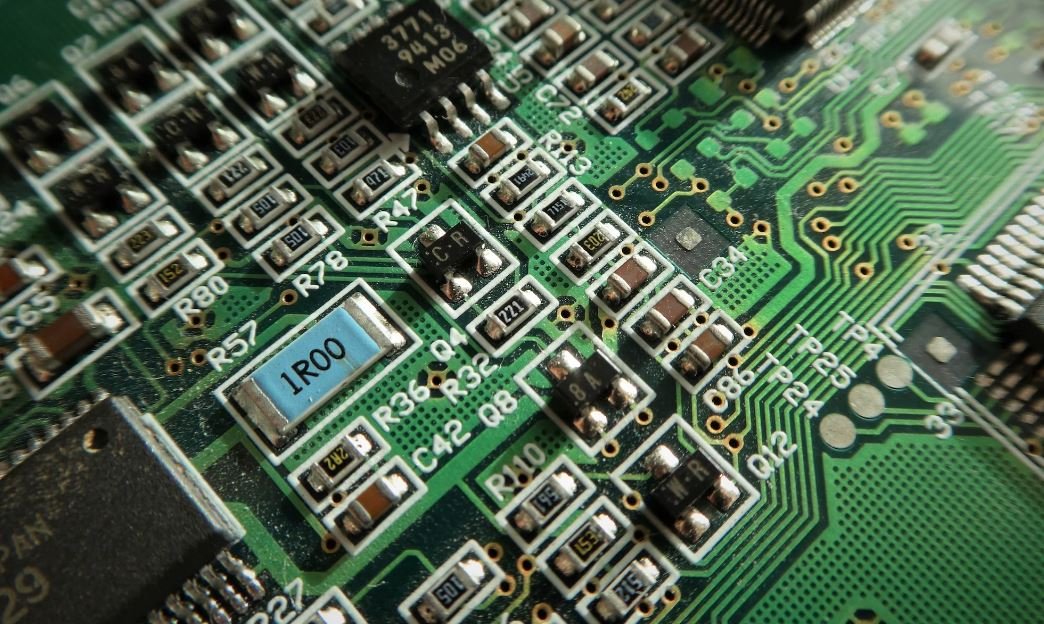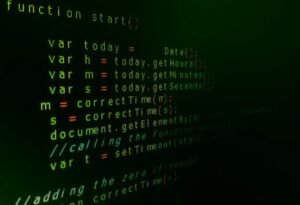What Is the Main Reason for Bias in AI Systems?
The increasing use of Artificial Intelligence (AI) systems in various sectors has brought attention to the issue of bias present in these systems. Bias refers to the systematic and unfair favoritism or discrimination towards certain individuals or groups. Understanding the main reason behind bias in AI systems is crucial for addressing this critical issue and developing more fair and equitable AI technologies.
Key Takeaways:
- Bias in AI systems arises due to the underlying data used for training.
- Training data may be biased itself or reflect societal biases.
- Insufficient diversity in the data used to train the AI models can contribute to bias.
- AI models can also inadvertently amplify existing biases in the data.
The Role of Training Data
The main reason for bias in AI systems lies in the training data used to develop and refine these models. AI systems learn from vast amounts of data, and if that data contains biases, the models will also reflect those biases.
Training data acts as the foundation on which AI models are built, potentially impacting their fairness and bias.
Training data can introduce or reinforce biases in AI systems in several ways:
- Biased Labels: The labels assigned to the data used for training can be subjective and influenced by human biases, leading to biased outcomes.
- Data Skews: If the training data predominantly represents one group to the detriment of others, biases may be learned and perpetuated by the AI system.
- Data Collection Methods: Biases can arise if the collection methods for training data are flawed or non-representative of the diverse population the AI system will interact with.
Inherent Societal Biases
One crucial aspect to consider is that AI systems reflect and learn from the societal biases present in the data. Societal biases are present within institutions, organizations, and communities, and they can inadvertently make their way into the training data.
The incorporation of societal biases into AI systems can perpetuate discrimination and inequalities.
These biases can manifest in various forms:
- Gender Bias: If historical data is biased towards certain genders, AI systems may exhibit gender-based biases.
- Racial Bias: Historical biases and discrimination can influence the representation and treatment of different racial groups in the training data, leading to racial biases in AI systems.
- Age Bias: Biases related to age can be introduced if the training data mainly consists of data from certain age groups.
Amplification of Existing Biases
AI models, even when trained on unbiased data, can inadvertently amplify existing biases in the data due to complex patterns they uncover during training.
AI systems might spot patterns that humans miss, but they can also amplify subtle biases hidden in the training data.
To understand how biases can be amplified, consider the example of a recruitment AI system. If historical hiring patterns are biased towards certain demographics, the AI model might learn and replicate these biases, leading to discriminatory outcomes in the hiring process.
Data Diversity and Mitigating Bias
Data diversity plays a vital role in mitigating bias in AI systems. By ensuring diverse representation in the training data, it becomes more feasible to reduce biases.
Creating an inclusive training dataset that encompasses a wide range of demographics helps to counter bias in AI systems.
Some strategies to promote data diversity and mitigate bias include:
- Collecting Representative Data: Carefully selecting and curating training data from diverse sources and populations can help reduce bias.
- Audit and Testing: Regularly testing AI systems for biases and auditing the training data to identify and mitigate existing biases.
- Multiple Perspectives: Encouraging a collaborative approach where multiple stakeholders with diverse perspectives contribute to AI system development.
| Data Type | Bias Impact | Mitigation Strategies |
|---|---|---|
| Training Data | Biased labels, data skews, flawed collection methods | Label evaluation, representative collection, improved collection methods |
| Societal Biases | Gender, racial, and age biases | Education, awareness, diversity-focused data collection |
| Amplification of Biases | Uncovering and replicating biases from training data | Audit, testing, explainability measures |
Conclusion
Biases in AI systems can have significant societal repercussions, reinforcing existing inequalities and perpetuating discrimination. The main reason for bias in AI systems is the influence of training data, whether it is biased itself or reflects societal biases. Promoting data diversity and implementing mitigation strategies are crucial steps in minimizing bias and creating more fair and equitable AI systems.

Common Misconceptions
Misconception 1: Bias in AI systems is intentional and purposeful
One common misconception about bias in AI systems is that it is intentional and purposeful. People often assume that developers and designers purposely encode bias into AI algorithms to manipulate outcomes or promote particular agendas. However, bias in AI systems is typically unintentional and arises from the data used to train the algorithms.
- Bias in AI systems is often a result of the biases present in the data used for training.
- Developers and designers strive to mitigate bias, but it is a complex challenge.
- Recognizing and addressing biases requires ongoing monitoring and improvement of AI systems.
Misconception 2: Bias in AI systems is limited to specific demographics
Sometimes, there is a misconception that bias in AI systems only affects specific demographics, such as race or gender. However, bias in AI systems can manifest in many ways and impact various groups and individuals differently. It is not limited to a particular population or demographic.
- AI systems can display bias related to age, education level, socioeconomic status, and other factors.
- Biased AI systems can unintentionally disadvantage certain groups or reinforce existing inequalities.
- Addressing bias requires considering the broader impact on diverse populations.
Misconception 3: Bias in AI systems is easily identifiable and solvable
An unrealistic expectation is that bias in AI systems is easily identifiable and solvable with a one-size-fits-all solution. In reality, identifying bias can be challenging as it may be subtle or hidden within complex algorithms. Furthermore, solving bias in AI systems is an ongoing and evolving process.
- Detecting bias often requires thorough analysis and examination of AI systems.
- Solving bias requires a holistic approach that includes diverse perspectives and continuous improvement.
- Ethical considerations must be integrated into the development and deployment of AI systems to minimize biases.
Misconception 4: Bias in AI systems is rare and insignificant
Another misconception is that bias in AI systems is rare and its impact is insignificant. However, numerous studies and real-world examples have demonstrated instances of bias in various AI applications, from facial recognition systems to recommendation algorithms. The potential consequences of biased AI systems should not be underestimated.
- Evidence of biased AI systems highlights the need for increased awareness and scrutiny.
- Even seemingly small instances of bias can have significant impacts on individuals and communities.
- Addressing bias requires a proactive and responsible approach to AI development and deployment.
Misconception 5: Bias in AI systems can be eliminated completely
Lastly, a common misconception is that bias in AI systems can be completely eliminated. While efforts can be made to reduce bias and mitigate its effects, achieving complete elimination is unlikely due to the inherent biases in the data and limitations of current technology.
- Striving for fairness and reducing bias should be a continuous goal in AI system development.
- Transparency and accountability are essential to address and manage biases effectively.
- Acknowledging the limitations of technology is important in setting realistic expectations for bias reduction.

Introduction
In this article, we will explore the main reason behind bias in AI systems. Bias in AI refers to the unfair or discriminatory treatment of certain groups of people by artificial intelligence algorithms. It is crucial to identify and address this bias to ensure ethical and unbiased AI applications. Below are ten tables presenting various points and data regarding the main reason for bias in AI systems.
Table 1: Bias in AI Gender Classification
Machine learning algorithms used in facial recognition systems often exhibit gender classification bias, misclassifying individuals based on gender.
Table 2: Racial Disparity in Facial Recognition
Facial recognition technology tends to have higher error rates for people with darker skin tones, contributing to racial bias in AI systems.
Table 3: Dataset Bias
Data used to train AI models is often biased in terms of race, gender, or socioeconomic factors, leading to biased predictions and recommendations.
Table 4: Lack of Diversity in AI Workforce
A lack of diversity in AI development teams can result in biased algorithms, as perspectives from different backgrounds and experiences are not adequately incorporated.
Table 5: Unbalanced Training Data
AI models can show bias when the training datasets are imbalanced, meaning they have unequal representation of different groups or classes.
Table 6: Implicit Bias in Algorithm Design
Algorithm designers may have subconscious biases that unintentionally influence the decisions made during the development process.
Table 7: Bias Amplification Through Feedback Loops
AI systems can reinforce existing biases when they rely on user feedback, as they may perpetuate discriminatory patterns present in the data.
Table 8: Lack of Ethical Guidelines
The absence of comprehensive and well-defined ethical guidelines for AI development allows bias to seep into systems due to negligence or oversight.
Table 9: Transparency and Interpretability Challenges
The complexity of some AI algorithms makes it difficult to identify and rectify biased decision-making processes.
Table 10: Profit-Driven AI Development
Commercial interests and profit-driven development of AI systems may prioritize speed and efficiency over ethical considerations, resulting in biased algorithms.
In conclusion, bias in AI systems can be attributed to various factors, including dataset bias, lack of diversity in the workforce, implicit biases in algorithm design, and profit-driven development practices. Addressing these factors requires a multidimensional approach involving ethical guidelines, transparent algorithms, diverse development teams, and responsible data collection. By actively working to eliminate bias, we can ensure more fair and unbiased AI systems for the benefit of all.
Frequently Asked Questions
What Is the Main Reason for Bias in AI Systems?
Bias in AI systems can be attributed to various factors. Some of the main reasons include:
How Does Training Data Impact Bias in AI Systems?
Training data plays a crucial role in AI systems, as it helps them learn and make decisions. If the training data is biased or contains discriminatory patterns, the AI system may inadvertently perpetuate that bias.
What Role Does Algorithm Development Play in Bias?
Algorithm development is crucial for AI systems, as algorithms determine how the system processes data and makes decisions. If the algorithms are not designed to account for bias or are themselves biased, the AI system may exhibit biased behavior.
Can Human Bias Influence AI Systems?
Yes, human bias can significantly influence AI systems. Humans are involved in the development, training, and decision-making processes of AI systems. If these humans have inherent biases, consciously or unconsciously, those biases may be reflected in the AI system.
How Is Bias Identified in AI Systems?
Bias in AI systems can be identified through various methods, such as conducting audits, analyzing system outputs, and comparing decisions made by the system to human judgments. Additionally, feedback from users and affected individuals can also help identify instances of bias.
What Are the Consequences of Bias in AI Systems?
Bias in AI systems can have severe consequences, including perpetuating social inequalities, reinforcing stereotypes, and amplifying discrimination. It can lead to unfair treatment and decision-making, limited opportunities, and the exclusion of marginalized groups from benefiting equitably from AI technologies.
How Can Bias in AI Systems Be Mitigated?
Mitigating bias in AI systems requires a multi-faceted approach. This can involve ensuring diverse representation in AI development teams, critically examining training data for biases, refining algorithms to reduce discriminatory outcomes, and implementing ongoing monitoring and evaluation practices to detect and address bias.
What Steps Should Organizations Take to Address Bias in AI Systems?
Organizations should prioritize addressing bias in AI systems by implementing robust ethical frameworks, establishing clear guidelines and standards for data collection and algorithm development, encouraging transparency and accountability, and involving diverse stakeholders in decision-making processes.
Is It Possible to Completely Eliminate Bias in AI Systems?
While it might be challenging to completely eliminate bias in AI systems, it is possible to significantly reduce its impact through continuous improvement, transparency, and responsible AI practices. Striving for fairness, accountability, and inclusivity should be the aim while developing and deploying AI technologies.
What Role Should Regulators play in Addressing Bias in AI Systems?
Regulators can play an essential role in addressing bias in AI systems by implementing policies and guidelines that promote ethical and accountable AI practices. They can facilitate transparency, enforce compliance with non-discrimination laws, and encourage organizations to adopt fair and unbiased AI technologies.




